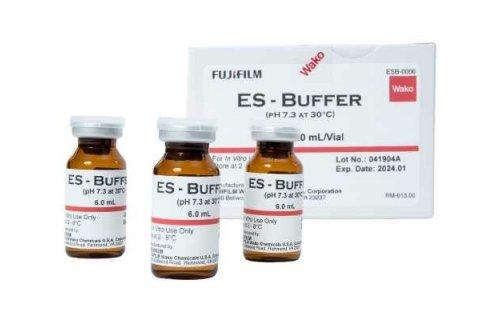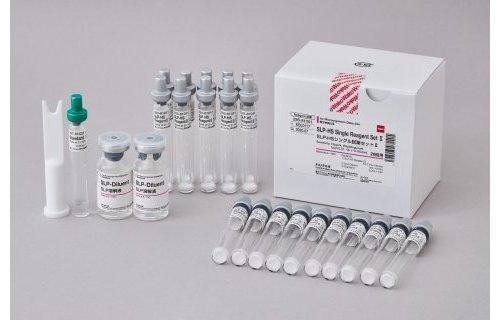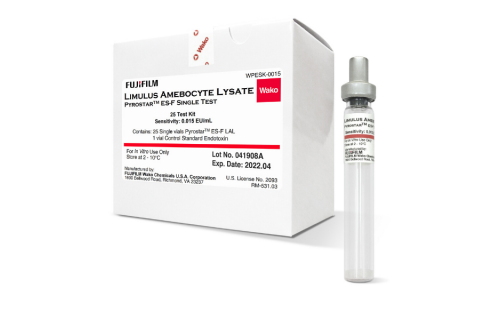The significance of endotoxin testing
Endotoxins are ubiquitously present in the environment and are primarily released from the outer membrane of gram-negative bacteria during bacterial lysis. If bacterial endotoxins gain parenteral access to the human organism, they may cause inflammation, septic shock, hemorrhage, and even death.1 Moreover, in research applications, endotoxin contamination leads to unreliable results and possibly misleading interpretations. Therefore, endotoxin testing has become an integral part of the development and quality control of injectable pharmaceuticals and medical devices.
The Limulus amebocyte lysate (LAL) assay as the best established endotoxin test
Several methods for endotoxin testing have been developed. Among them, the LAL assay has been established as the gold standard test for endotoxin determination.2,3 The LAL assay relies on the incubation of protein extracted from the blood of horseshoe crabs with a sample analyzed for endotoxin content. If the investigated sample contains endotoxin, the pro-clotting enzymes in the LAL interact with it, leading to activation of the coagulation cascade, modification of the amebocyte coagulogen, and formation of a gel clot. This is known as the Gel-clot method or technique. The formed gel clot is visualized and qualitatively assessed. Even though the gel clot technique is sensitive and user-friendly, it does not allow endotoxin quantification and high-throughput analysis. Therefore, quantitative LAL assays have also been developed.
The development and advantages of kinetic LAL assays
Kinetic LAL assays have significant advantages, because they can quantify the endotoxin content over a wide range of concentrations and enable automated analysis, reducing user-related assay variations.Endotoxin quantification can be carried out by evaluating the turbidity (a turbidimetric LAL assay) or changes in the color of the reaction mixture (a chromogenic LAL assay). Both the turbidimetric and chromogenic LAL assays can be used as kinetic and end-point assays.
Quantitative turbidimetric LAL assay
The quantitative turbidimetric LAL assay evaluates the turbidity (cloudiness) formation that occurs after enzymatic substrate cleavage and prior to gel formation. The turbidity is quantified using a spectrophotometer or a microplate reader. The quantitative turbidimetric LAL assay is reliable, sensitive, and compatible with high-throughput analysis.
Quantitative chromogenic LAL assay
The chromogenic LAL assay relies on the cleavage of a chromogenic substrate, which leads to chromogen release. The colorimetric reaction is then visualized and quantified photometrically. The quantitative chromogenic LAL assay is highly sensitive and enables automated endotoxin measurements and high-throughput analysis.
Quantitative recombinant factor C-based assays
Recombinant factor C-based assays for quantitative endotoxin determination have also been developed. They employ recombinant factor C, which is the initial component of the horseshoe crab clotting cascade, induced by endotoxins.4
Considerations for transitioning to kinetic LAL testing
The LAL assay has largely been accepted as the standard test for endotoxin determination.2,3 Even though all variations of the LAL assay are sensitive and reliable, quantitative LAL assays and recombinant factor C-based assays are gaining popularity due to their ability to provide quantitative and high-throughput endotoxin determination. A number of factors should be considered when selecting the most appropriate quantitative assay for endotoxin determination,5 including the nature and characteristic of the analyzed samples, the available equipment, and possibly relevant regulatory requirements.
Literature sources
- Sampath VP. Bacterial endotoxin-lipopolysaccharide; structure, function and its role in immunity in vertebrates and invertebrates. Agriculture and Natural Resources 2018;52:115–120. https://doi.org/10.1016/j.anres.2018.08.002.
- Wheeler, A. Comparing endotoxin detection methods. Pharmaceutical Technology 2017;41:58–62.
- Mehmood, Y. What Is Limulus amebocyte lysate (LAL) and its applicability in endotoxin quantification of pharma products. Growing and Handling of Bacterial Cultures. IntechOpen 2019. Doi: 10.5772/intechopen.81331.
- Suvarna, K. Endotoxin detection methods – Where are we now?American Pharmaceutical Review. 2015, August 25.
- Wong J, Davies N, Jeraj H, Vilar E, Viljoen A, Farrington K. A comparative study of blood endotoxin detection in haemodialysis patients. Journal of Inflammation (London) 2016;13:24. doi: 10.1186/s12950-016-0132-5.
Featured products

ES Buffer


